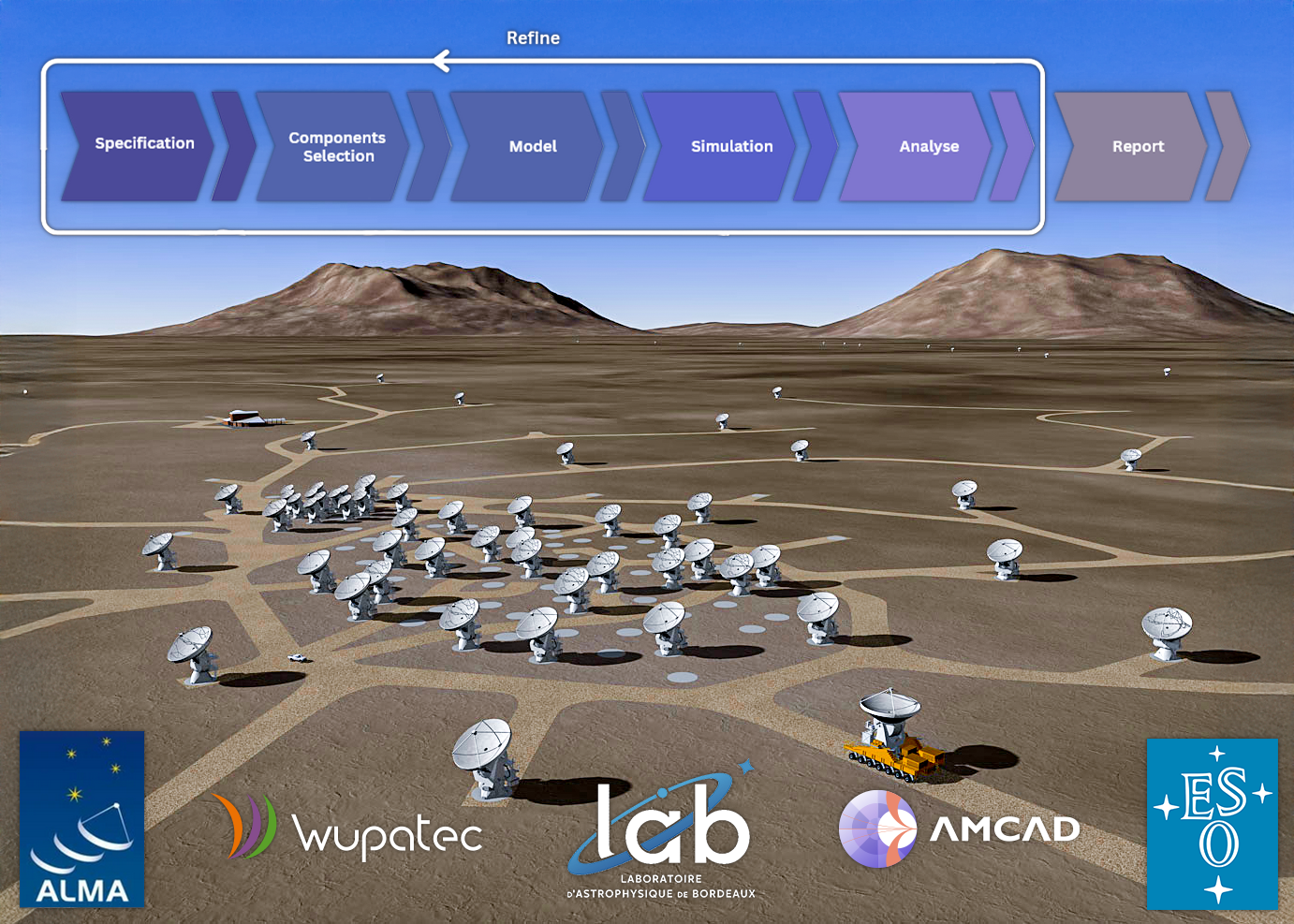
For the Atacama Large Millimeter/submillimeter Array (ALMA) project —the most powerful radio telescope on Earth— AMCAD and WUPATEC contributed by designing and simulating key parts of the intermediate-frequency (IF) reception chain.This chain is a part of the path that signals follow, starting from outer space, captured by the receiving antennas, and processed all the way to the analog-to-digital converter module. The receivers, placed inside a cryostat, convert the sky frequencies (around 30 GHz to 1 THz) into the IF band (0–20 GHz).
The received signals, at millimetric and submillimetric wavelengths, come from vast cold clouds in space only a few dozen degrees above absolute zero, as well as from some of the earliest and most distant galaxies in our Universe.
This work was carried out as part of the ALMA project — a partnership between the European Southern Observatory (ESO), the U.S. National Science Foundation (NSF), and Japan’s National Institutes of Natural Sciences (NINS), in cooperation with Chile.We thank the Laboratoire d'astrophysique de Bordeaux (LAB, Université de Bordeaux) for their trust on this project.
AMCAD provided an anti-aliasing filter solution tailored to the project’s specifications, analyzed the signal path by calculating overall gain, noise, compression, ripple and simulated the full frequency response of the intermediate-frequency (IF) chain, including cables, connectors, and circuit board layouts. They also suggested improvements to the functional design, ensuring performance stayed as close as possible to the required specifications, and delivered a final report with the optimized signal chain and simulation results.



